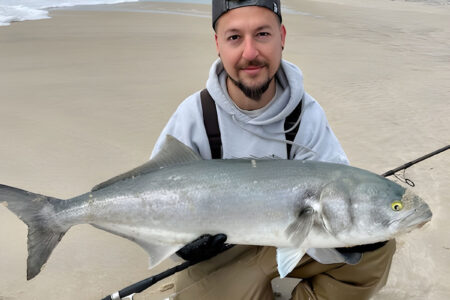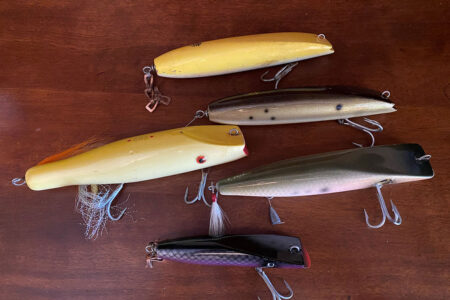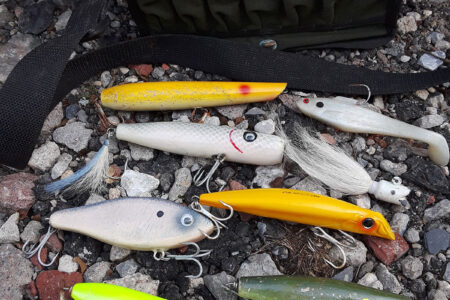The more info you have on the beach, the more reliable will be your adaptations to changing fish moods and hydrodynamics.
It’s a simple fact that the more fish there are, the easier they are to catch! When a species of fish is abundant, they feed in more places, are less wary, and feed longer in the tide cycle. Consider the fall run of 2019. Stripers were festooned along the sand beaches of the northeast and mid-Atlantic. Many anglers of varying skills caught them easily on most days, and picked on slower days. A favorite lure was a metal lure with a tube because this method is reliable and doesn’t require much in-tide adaption as water conditions and fish moods change. Other anglers caught more fish more consistently by switching from metal lures to bucktails to soft plastics as circumstances warranted. These anglers adapted to fish abundance, moods, and positions relative to beach structure and water hydrodynamics.
Rationale for Adapting
When I first joined the Long Island based High Hill Striper Club and began to fish competitively, I entered into discussions with several of High Hill’s most experienced and productive anglers; people like the late Willy Young, Fred Schwab, and Jack “The Professor” Frech. I told them I wanted to improve my skills to become an excellent surf angler. Their replies were curious to me at the time, but took on more meaning as my experience grew. They translated my interest correctly at the time to mean I wanted to catch more fish, but they responded by saying that you don’t necessarily identify a really good surf fisherman by how many fish he/she catches; especially on a given day. Rather, they said, the best surf rats catch fish “when there are no fish.” Obviously, an angler can’t catch fish when they aren’t there, but that’s not what they meant. They explained that on many occasions there are only a few fish and they are non-competitive. In this scenario, the angler who catches one or two fish is the person whose skills are top-notch, and who can analyze conditions and adapt to them.
The Analytical Angler
When it comes to analysis, anglers are all over the map. There is no “right” way to approach this because fishing is supposed to be enjoyable and personal. There are those who simply enjoy casting and winding, those who enjoy a little mental exercise, and those who spend more time thinking about fish, fishing techniques, and adaptation than they do actual fishing. I belong to the latter, and I admit sometimes I drive myself nuts, because I can’t accept that I don’t ultimately come to understand something – whatever it is. In truth, there are times when I must accept my frustration and move on.
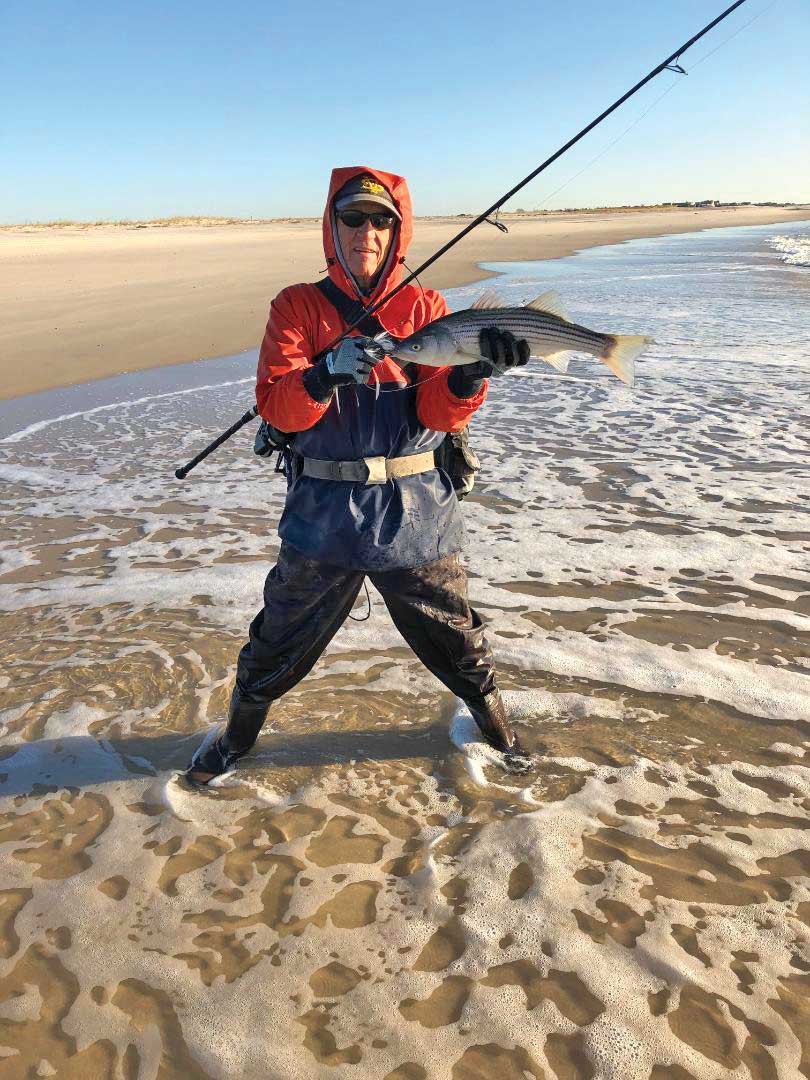
Nonetheless, being analytical about fishing has also served me well, because when I come to understand something, however subtle, I am in a position to fulfill the prophecy of my High Hill mentors and “catch fish when there are no fish!” In the end, it’s more than understanding weather, tides, winds, bait, and fish, it’s about being able to adapt to changes in these things: especially hydrodynamics, bait, and fish.
It’s Alive
Dr. Frankenstein was pleased when his monster showed signs of life, but that’s not what I mean. I mean fish are not inert pieces of wood, algae, or detritus, rather they swim and eat and adapt to food, weather, water conditions, and seasons. They not only adapt gradually through seasonal changes, but also quickly during a single tidal period. If we assume the weather is constant; which it is not in the fall for very long, the biggest driving force influencing fish behavior, both bait and predator, is hydrodynamics.
Hydrodynamics is the way water moves in response to different environmental conditions. I’m sure you’ve all observed this; perhaps in a stream, an inlet, or a creek mouth. In a stream, water moves more slowly over deeper water and the flow is steady with minimal turbulence. Then, when the stream flows through a narrow or shallow area, the water picks up speed and there is an increase in turbulence. The same kind of thing occurs in all kinds of estuarine places as well as along ocean beaches although the resulting water effects may be more subtle. Nonetheless, ocean hydrodynamics change continuously as the tide rises and falls because the water level rises and falls over and around structure.
A Classic Beach
Once again, perfect conditions rarely or never exist, but let’s make our discussion about fishing along a classic beach. That is a beachfront with a slope of 45 degrees, the offshore bar is about 75 to 100 yards off the beach with cuts (deeper areas) here and there, and the trough is 4 to 5 feet deep at low tide. At high tide, waves will move over the bar, break, reform, and roll towards the beach. Water movement will be relatively the same everywhere. Now let’s move swiftly to low tide. At low water, waves crash over the bar and fill the trough, but don’t uniformly reform in the trough. Instead they move in different directions because they “feel” bottom over shallower spots and break or turn creating turbulence. Whereas at high tide the water entering the trough could easily exit back over the bar between waves, now a shallow bar prevents this and the water only moves into the trough.
However, two different water levels (ocean and trough) cannot exist and trough water seeks a place to leave, such as nearby slightly deeper cuts creating areas of turbulence along the edges of the cut and in front of the cut. At high tide, waves hit the beach and roll up the slope toward the flat berm. At low tide they hit the slope, crash on the slope, run up the slope with speed, and then rush down the slope where they bang into the next incoming wave, creating incredible turbulence at the base of the slope – an area surf rats call “the lip.”
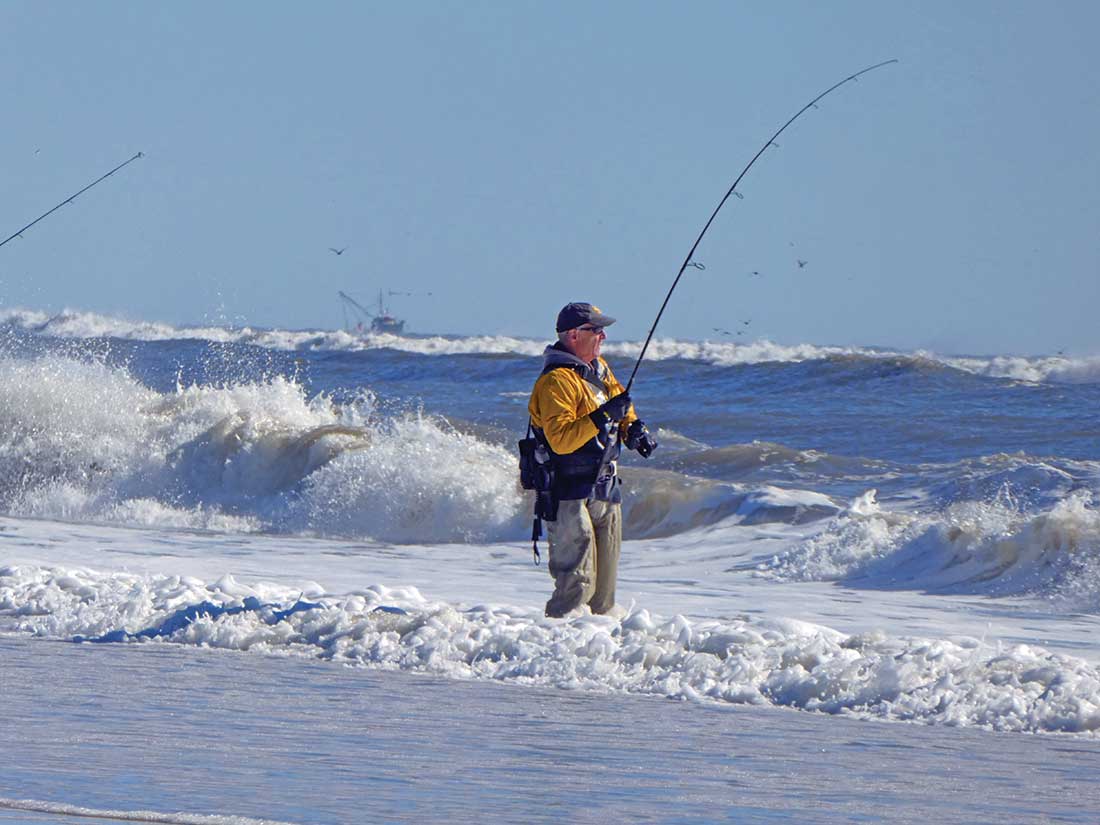
Casting and Winding
The angler who simply casts and winds from high tide to low tide may only catch fish when they are feeding in a given place, at a given time, and at a given distance from the beach sand. On the best days, a cycle of catch-and-not-catch sets up and repeats. I understand that for many this is identified as success. However, it’s worth knowing that the on-and-off cycle is a result of bait, fish, and hydrodynamic changes that occur as the water level rises and falls.
For some, intermittent success raises questions because they want to catch as many fish as possible during a given tide, and so they begin to ask questions: Why the cycle? Is there a way to catch fish more consistently? What aspects of all the elements in front of me don’t I fully understand? An analysis of as many factors as possible sometimes provides answers to these questions which in turn increases productivity. Although bait numbers, fish numbers, and presentations are primary aspects to examine, many beach rats overlook hydrodynamics. I can’t do much about the abundance of bait and fish in the trough, but I can do something about adapting my presentations to changes in the water in front of me.
First Thought
My first thought is about hydrodynamics rather than lures and presentations. Always look around before starting to cast, rather than plunge into the surf, not knowing where the best structure and corresponding water movements are located. This preliminary evaluation is actually easier than many anglers believe. An angler need only process information with a few simple concepts in mind. One, where is the white water? Two, where is the lighter or sandy colored water? Three, where is the water dark? Four, do I see any surface water movement that is inconsistent (“funky”) with the rest of the water in the trough and along the shoreline? Once we have answers to these questions, we can move on to interpretations.
White water means very shallow water that is usually associated with an offshore bar, an underwater point at the shore, or an elevation somewhere in the trough. Next, lighter colored water is shallower than darker water. Finally, areas of water that move differently than the rest almost always indicate areas of turbulence that are associated with bottom irregularities or openings (cuts) in the offshore bar.
Ready for Action
Armed with these interpretations I can make a decision about where to begin fishing. White water and funky water are areas of turbulence. Predators seek out the turbulence because it makes feeding easier. If the turbulence creates an eddy there will also be a calmer portion at the edge where baitfish will attempt to seek shelter, but instinct and experience cause predators to seek out these places, too. Now that I’ve studied the beach and surf before I cast, I walk to an area that I judge has turbulence and might be a good feeding area. I have always found that my feet are one of my most important fishing tools. However, I do not plant my feet in the sand and stay in that spot for the entire tide. As the tide progresses, white water comes and goes, the trough depth changes, and turbulence wanes but builds in other places. At this point, I abandon once productive spots for new ones with more turbulence. Furthermore, lures that work well at high water, may not at low water. So, whereas a 2-ounce bucktail was perfect at high tide, it now buries itself in the sand during the retrieve and I switch to a 1- or 1-1/2-ounce bucktail. The same would be true of metal lures.
Changing Presentations
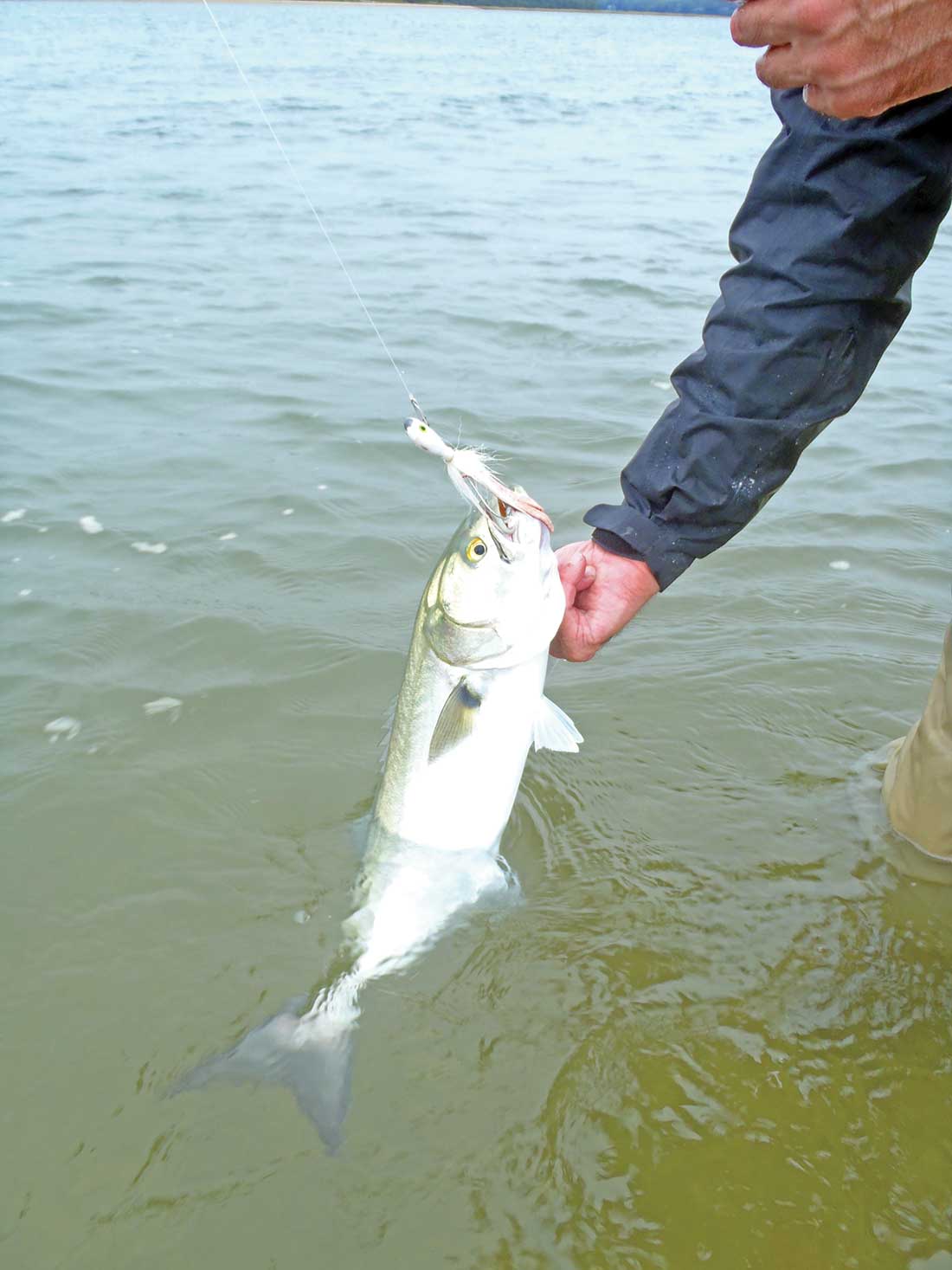
Since bait abundance and species may change during a tide cycle, an angler may find a presentation that was successful at higher water levels no longer attracts as many hits. Good advice – always change your presentation before you change your lure. During the 2019 fall run I found that fish changed their feeding mood more frequently than in any fall I can remember. For example, one day I started with a 1-1/2-ounce bucktail in 2-foot seas and caught fish steadily for about an hour. Then strong hits turned into bumps. I switched from a steady close to the bottom retrieve to dragging the bucktail and success picked up. Later I got one soft hit after another on a bucktail no matter the retrieve, and I switched to a A-17 with a tube retrieved at normal speed and resumed catching fish. At the bottom of the tide I needed to cast the tin and tube and crank it in as fast as possible in order to catch fish. By adapting to the water and the mood of the fish, I caught fish consistently from high water to low water.
Another tool in my arsenal are my eyes. Unless I’m using poppers or pencils poppers where the surface action of the lure, hits and swirls, as well as hook setting requires visual attention, I look around while I retrieve because I know I will feel the hit and do not need to watch my line while retrieving. I watch bird activity, water movements, sometimes bait schools, and even other anglers in order to gather information that helps me to reevaluate and adapt what I’m doing and where I’m doing it. The information tidbits are similar to pieces in a jigsaw puzzle. When I put enough pieces together, I begin to “see” the subject of the puzzle. The more pieces to the puzzle I put in place, the more reliable will be my assumption about the theme of the puzzle. Similarly, the more tidbits of info I have on the beach, the more reliable will be my adaptations to changing fish moods and hydrodynamics.
